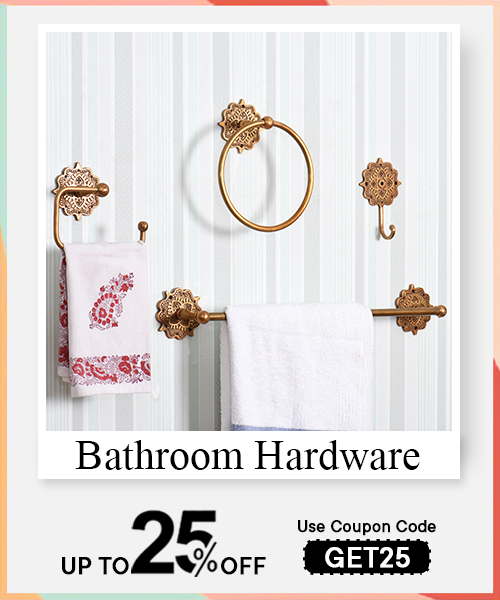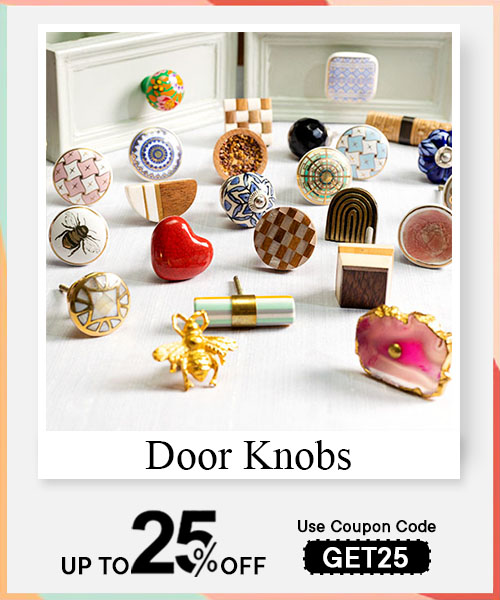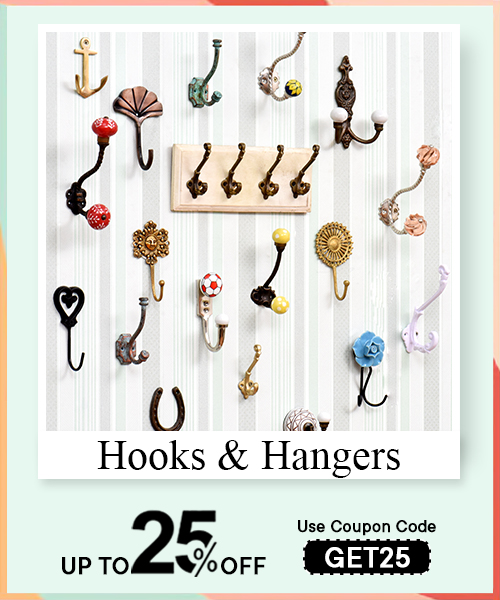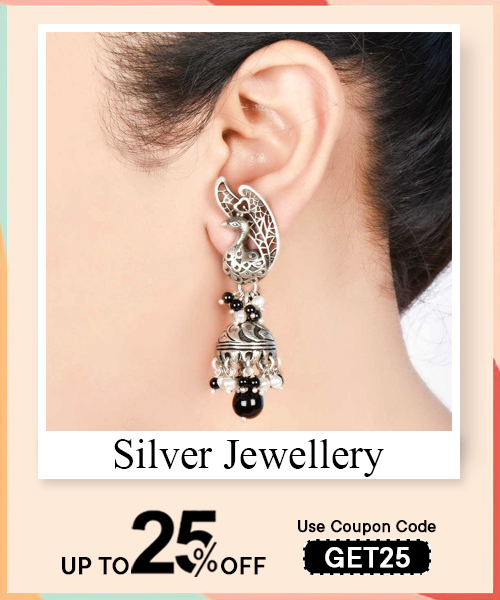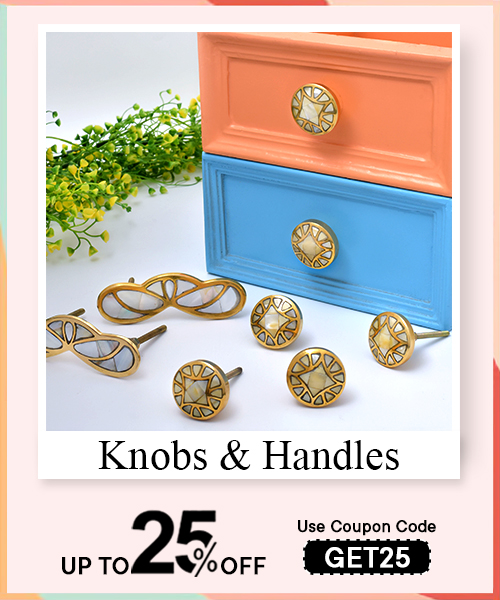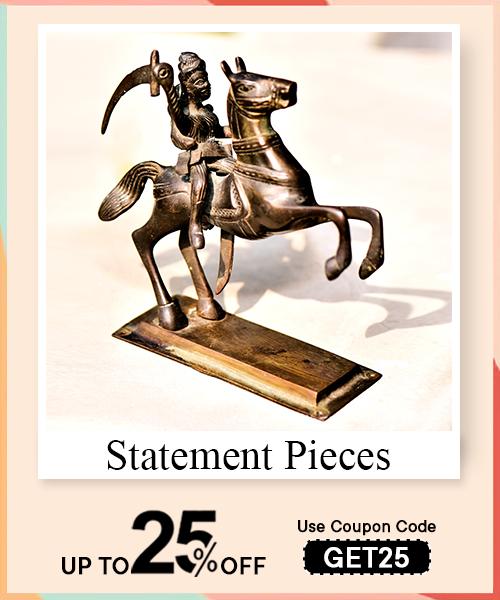Mortise door knobs can serve as both functional as well as ornamental aspects of our houses. Mortise door knobs are meant to be put into a rectangular pocket or "mortise" carved into the edge of the door. This design makes the connection between the knob and the door more secure and solid.
Ball-knob are shaped like spherical balls, providing a versatile and timeless option for living spaces.
The spherical form of the knob itself is the characteristic element of ball knob mortise doors. The smooth and rounded surface of the ball knob complements both modern and traditional decor, making it a flexible choice.
Ball-knob mortise doors are available in various materials, allowing homeowners to customize their pick to their tastes and the overall design concept of their home. Brass, stainless steel, and even glass are standard materials.
One of the primary benefits of ball-knob mortise doors is their adaptability. Whether in a household setting, a business location, or even a historical building. In addition to their ease of use with various door types, they are a popular choice for internal doors in bedrooms, bathrooms, and closets.
Ball-knob mortise doors may be highly durable. Stainless steel and brass are recognized for their durability, while glass ball knobs provide a delicate touch to the design.
Lever-handle mortise doors are an excellent choice for various applications, including residential and commercial buildings.
The versatility of the design of lever-handled mortise doors is one of their distinguishing qualities. Because of this variety, homeowners and designers may choose lever handles that complement the overall look of the space, whether contemporary, traditional, or somewhere in between.
The lever design allows for simple grasping and manipulation, resulting in a smooth and effective method of opening doors. This capability is quite helpful in both home and business settings.
Lever-handled mortise doors are available in various materials. Brass, stainless steel, and even premium finishes like brushed nickel are standard materials.
Lever-handled mortise doors are used in many places in a house or business structure. They are widely used for primary, internal, and outside entry doors.

Pedestal mortise door knobs have a unique shape that resembles a little column or pillar.
The pedestal's elaborate decoration, ranging from modest ridges to complex carvings, displays a devotion to ageless and artistically appealing craftsmanship.
The ability for exquisite design is one of the distinguishing features of pedestal mortise door knobs. The pedestals frequently include intricate carvings, patterns, or motifs that appeal visually. The door knob becomes a focal point as a result of this attention to detail, contributing to the overall mood of the room.
Precision is required when installing pedestal mortise door knobs to guarantee appropriate alignment and performance. Following manufacturer specifications or obtaining expert installation services ensures a solid fit. This thorough technique guarantees that the door knobs perform smoothly and efficiently, providing both flair and usefulness.
Keyed mortise door knobs are designed to fit into mortise locks, providing a strong and dependable mechanism that improves the door's overall performance.
To suit any interior or exterior design, keyed mortise door knobs are available in a range of finishes and styles. From traditional and old techniques to trendy and contemporary looks.
The presence of a keyway separates keyed mortise door knobs from non-keyed equivalents, allowing users to lock their premises confidently. The key gives the user a tactile sensation of control, making it an excellent choice for locations requiring regulated access, such as front doors, offices, or private rooms. The keys are frequently intricately designed, lending a sense of elegance to the whole look.
When the key is inserted and twisted, the internal components of the mortise lock contact, either locking or unlocking the latch, depending on the direction of the turn. This seamless mechanism combines simplicity and security, making it a popular choice for discriminating households and businesses.
Read More: EXPLORE STYLISH AND FUNCTIONAL SPRING-LOADED DOOR KNOBS FOR YOUR HOME
The mortise door knob is a monument to both design and function in the world of door hardware. This timeless art has achieved great appeal because of its remarkable longevity, enhanced security features, ease of installation, unrivaled adaptability, and wide range of styles. As we explore the world of mortise door knobs, we discover the several advantages that make them a popular option among homeowners, interior designers, and architects.
One of the most significant advantages of mortise door knobs is their unmatched longevity. These knobs are manufactured keeping accuracy and sturdiness in mind and are built to last. Unlike the other types, which may be subject to wear and tear over time, mortise door knobs are designed to withstand continuous usage without sacrificing performance. These knobs' internal mechanics are contained within a strong mortise lock, adding strength and lifespan. This endurance aspect provides a longer lifespan and a cost-effective investment for homeowners.
People value home security, making the security aspects of door hardware necessary. Mortise door knobs excel in this regard, providing a higher level of security than standard knobs. The mortise lock system is more secure by design, providing excellent protection against illegal access. The mortise lock's internal components, which include a deadbolt and latch bolt, connect with the door frame, forming a powerful barrier against forceful entrance. Mortise door knobs are a recommended choice for individuals who prioritize the safety and security of their houses due to their sturdy construction and the addition of these elements.
Despite their complex appearance and sturdy construction, mortise door knobs are surprisingly simple to install. The installation begins with making a mortise pocket in the door to accommodate the lock mechanism. While this may appear complicated, it avoids the need for extra drilling or adjustments, making installation easier than with other forms of door hardware. The simplicity of building not only saves time but also provides a trouble-free experience for both homeowners and professional installers.
Mortise door knobs are known for being versatile to a broad range of construction and interior design styles. Mortise door knobs blend well into many aesthetics, whether decorating a stately Victorian home or a modern minimalist environment. The availability of various finishes, materials, and designs contributes to the adaptability, allowing homeowners to pick door knobs that suit their entire design goal. The broad choice of finishes means that mortise door knobs can simply improve the visual attractiveness of any door they grace, from polished brass and old bronze to sleek stainless steel.
One of the most notable characteristics of mortise door knobs is the wide variety of designs available, allowing homeowners to personalize their living spaces. There is a mortise door knob to fit every style, whether you want an antique, rustic, modern, or eclectic design. Intricate craftsmanship, elaborate backplates, and distinctive forms add to the appeal of these door knobs, allowing them to operate as functional hardware as well as ornamental pieces. Homeowners may select from a variety of styles to make a statement or to merge the door knobs with the current decor.
Mortise door knobs are a classic and long-lasting choice for homeowners wishing to improve the security and appearance of their doors. Installing mortise door knobs may appear to be a complex operation, but with the correct equipment and step-by-step instructions, it can be a satisfying and doable DIY project. We will lead you through the whole process of installing mortise door knobs, from prepping the door for installation to testing the lock, in this detailed tutorial.
Before beginning the installation procedure, verifying that the door has been adequately prepped is critical. To start, follow these steps:
- Set of mortise door knobs
- Chisel
- Screwdriver
- Pencil
- A measuring tape
- Drilling and drilling bits
- Glue for wood
- The strike plate
- Screws
Select the Correct Door: Mortise door knobs work well on solid wood or solid-core doors. Ascertain if the door material is appropriate for mortising.
Determine Knob Position: Measure and mark the required doorknob and latch height. The doorknob is typically mounted 36 inches above the floor.
Make a mark on the centerline: Find the thickness of the door's centerline with a tape measure. Make a mark on both sides of the door.
Keep the Latch Position: Place the mortise set's latch template on the door edge, aligning it with the centerline. Using a pencil, mark the latch and striking plate positions.
Prepare the Mortise Cavity: Use a chisel to create a shallow mortise chamber for the latch and strike plate. Check that the depth corresponds to the measurements in the mortise set instructions.
Now that the door has been set up, install the latch assembly. Take the following steps:
Install the Latch: Insert the latch into the mortise cavity, ensuring that the beveled edge is facing the direction the door will close. Mark the positions of the screw holes.
Pilot Holes should be drilled: Make pilot holes for the latch screws using a drill and a suitable bit. Take care not to drill through the door.
Fix the Latch: Using the included screws, secure the latch in place. Check that it is flush with the door edge.
The plate, also known as an escutcheon, gives a beautiful element while concealing the hardware. To install it, follow these steps:
Plate Alignment: Align the plate with the latch assembly and place it over the doorknob hole. Mark the positions of the screw holes.
Pilot Holes should be drilled: Make pilot holes for the plate screws with a drill. Take care not to drill through the door.
Fix the Plate: Using the supplied screws, secure the plate in place. Assemble it to be centered over the doorknob hole and flush with the door surface.
After installing the mortise door knob components, it is essential to test the lock for functioning and security. Take the following steps:
Verify Alignment: Check that the latch aligns correctly with the strike plate. If necessary, modify the plate position.
Check the Knob: Check the knob for smooth functioning. The knob should latch securely, and the lock should engage smoothly.
Check the following key operations (if applicable): If your mortise lock has a key function, ensure it rotates smoothly and locks and unlocks the door.
As needed, make the following changes: If the knob or lock is not working properly, go over the installation instructions again to detect and repair any problems. It might be as simple as altering the mortise cavity or plate location.
Examine the Strike Plate Alignment: Check that the strike plate is aligned with the latch. Make any required improvements to create a safe environment.

Mortise door knobs are a timeless and dependable choice for homeowners looking for both performance and beauty. However, like with any mechanical system, they may need help with time. This detailed tutorial seeks to investigate troubleshooting strategies for the most frequent mortise door knob problems. We'll go into the complexities of a door not latching correctly, a door latch sticking, a key that isn't functioning, a mortise lock that is jammed, and a lock that isn't fastening correctly. You can preserve the longevity and effectiveness of your mortise door knobs by studying these concerns and possible remedies.
Improper latching can jeopardize your home's security and cause drafts, energy loss, and even safety problems. Several things might have a role in this issue:
- Misaligned Strike Plate: If the striking plate is misaligned, the latch may not fully engage, resulting in an improperly latching door.
- Worn-out Latch or Strike Plate: The latch or strike plate may wear out with time, limiting its efficacy.
- Sagging or Loose Door Hinges: Sagging or loose door hinges might create misalignment, preventing the door from latching correctly.
- Debris in the Latch: Dust, dirt, or debris can build up in the latch mechanism, causing it to malfunction.
A stuck door latch can be annoying and frustrating, making it impossible to open or close it smoothly. This problem might be caused by several factors, including
- Dirt and Grime Accumulation: Dust and debris can build in the latch, causing it to stick.
- Lack of Lubrication: A lack of lubrication can increase friction and cause the latch to stick.
- Misaligned Strike Plate: A misaligned strike plate might cause the latch to stick, similar to a door not latching correctly.
- Worn-out Latch or Internal Components: The mortise lock's latch or internal components may be worn out.
When a key fails to turn in a mortise lock, it may be irritating and frightening. Several reasons might contribute to this problem:
- Key Damage: A damaged key may not properly engage with the lock mechanism.
- Lock Cylinder Problems: The key may not spin smoothly if the lock cylinder is worn or broken. If necessary, consider replacing the lock cylinder.
- Dirt and Debris in the Lock: Accumulated dirt or debris in the lock might obstruct the movement of the key.
- Incorrect Key: Using the incorrect key or a key that has been wrongly duplicated might result in key-related difficulties.
A jammed mortise lock might leave the door inoperable and jeopardize your home's security.
- Foreign item in the Lock: The presence of a foreign item inside the lock mechanism is a typical cause of a jammed mortise lock
- Broken Internal Components: Internal mortise lock components, such as springs or pins, can break or become dislodged, resulting in a jammed lock.
- Worn-out Mortise Lock: Change the lock if it is old or noticeably worn.
- Mortise Lock: Consider replacing an old or noticeably worn lock with a new one.
- Improper Installation: Improper mortise lock installation might result in alignment concerns, which can lead to jamming.
A mortise lock that fails to secure correctly might jeopardize your home's security. Several reasons might contribute to this problem:
- Misaligned Strike Plate: A strike plate might keep the lock from being entirely secure.
- Worn-out Latch or Lock Cylinder: Wear and tear on the latch or lock cylinder might impair the lock's capacity to secure properly.
- Loose or Sagging Door Hinges: Loose or sagging door hinges might create misalignment, preventing the lock from properly locking.
- Inadequate Lubrication: Inadequate lubrication of the lock's components might cause higher friction, reducing the lock's functionality.
Read More: HOW TO CHANGE A DOOR HANDLE- A QUICK GUIDE
Mortise door knobs provide a sense of elegance to any home with their toughness and traditional appearance. They, however, require regular maintenance, just like any other mechanical component, to maintain smooth performance and lifespan. In this detailed article, we will dig into essentials, including lubricating the latch, tightening the knob or handle, cleaning the lock, inspecting the safety for damage, and repairing broken components.
One of the most important aspects of caring for a mortise door knob is to make sure that the latch performs appropriately. Dust, dirt, and normal wear and tear can clog the latch's action over time, producing a stiff or noisy mechanism. To counteract this, it is essential to grease the latch regularly. Remove the door knob assembly to expose the latch mechanism. Apply a little graphite-based lubricant directly to the latch's working components. Graphite lubricants are recommended because they provide long-lasting protection without accumulating dust, keeping the latch friction-free. After lubricating, turn the door knob several times to ensure uniform distribution of the lubrication and optimal performance.
Loose or unsteady door knobs do not only detract from the visual attractiveness of the door but also suggest possible security hazards. Inspect and tighten the screws that hold the knob or handle to the door regularly. Tighten any loose screws on both sides of the door using a screwdriver. Make sure the screws are tightly fastened but not overtightened since this might cause damage or stripping. If the doorknob has ornamental plates, inspect and tighten any screws that hold them in place. By swiftly repairing loose components, you improve the door's appearance and contribute to the general security of your property.
A clean lock is needed for the correct operation of a mortise door knob. Dust, filth, and accumulated material can clog the lock's internal components, causing it to operate slowly or jam. Begin the cleaning process by blowing away any loose particles from the keyhole and surrounding areas using a can of compressed air. To thoroughly clean the keyhole and internal components, moisten a cotton swab with a little solvent or alcohol and carefully wipe it. Be careful not to oversaturate the swab since this might cause corrosion. Once the lock has been cleaned, insert and withdraw the key numerous times to ensure it functions smoothly.
It is essential to examine the lock regularly for symptoms of deterioration to avoid possible problems from escalating. Examine the keyhole, latch, and other moving components for noticeable wear. If you find any rust, corrosion, or misalignment, fix it immediately to avoid additional damage. Examine the striking plate on the door frame to ensure appropriate alignment with the latch. Misalignment of the lock components might result in excessive wear and strain. Call a professional locksmith for a more thorough inspection and possible repairs if you see any substantial damage or wear that cannot be repaired with simple maintenance.
Even with regular care, certain portions of the mortise door knob may become irrevocably damaged in some situations. When this happens, replacing the affected components as soon as possible is critical to restore the door's functioning. The latch, springs, screws, and ornamental plates are standard components that may need to be replaced. When changing parts, utilize high-quality replacement parts that are compatible with your specific door knob model. If you require clarification about the compatibility of replacement components, see the manufacturer's recommendations or seek expert help. Replacing broken parts on time guarantees that the door continues to operate and minimizes extra stress on the remaining components, reducing the danger of future damage.
The key to continuing the functioning and attractiveness of mortise door knobs is regular maintenance. You can extend the lifespan of your door knobs and preserve the security and beauty of your house by following the steps listed in this thorough guide, which include lubricating the latch, tightening the knob or handle, cleaning the lock, inspecting the safety for damage, and replacing broken components. If you devote a short amount of time to these maintenance procedures regularly, you'll reap the benefits of smooth-running, long-lasting mortise door knobs for years to come.
Mortise locksets are vital to maintaining commercial space security and operation. Designed to provide robust security, convenience of use, and compliance with numerous standards, they are essential in protecting enterprises and restricting access to authorized workers.
Standalone locksets serve a purpose in commercial security systems since they provide a complete solution without any extra parts. These adaptable locksets may be used for various purposes, including secure access control in offices, retail spaces, and other commercial settings. Standalone Locksets have the following main features:
- They generally have a keyed entry mechanism that requires a physical key for access, making them a preferred choice for various commercial applications.
- Numeric Keypad Entry: Some freestanding locksets include a numeric keypad. This enables authorized people to enter a unique code to gain access, removing the need for physical keys and increasing security.
- Audit Trail Capabilities: Advanced standalone locksets may have audit trail capabilities, which record access activities. This function is crucial for business since it offers a complete history of who entered and exited the premises, assisting with security management and investigations.
- Integration with Access Control Systems: Many independent locksets are built to work in tandem, allowing enterprises to centrally manage and monitor access.
Panic device locksets are crucial components in maintaining occupant safety during an emergency. Panic Device Locksets have the following key features:
- Panic device locksets have a push bar mechanism that allows people to swiftly and efficiently push the bar to unlock the door during an emergency. This design allows for quick exit, lowering the danger of harm and assuring building code compliance.
- Panic device locksets are available in various configurations to accommodate different door types and sizes. Because of their versatility, they are appropriate for a wide range of commercial uses, from office buildings to educational institutions.
Exit device locksets are similar to panic devices in appearance, and They are frequently utilized in business situations when restricted access is required. Exit Device Locksets include the following key features:
- Escape device locksets guarantee that persons may easily escape the facility while preserving security by preventing unwanted access from the outside.
- Automatic Latching: These locksets frequently have automatic latching mechanisms, which ensure that the door closes securely when closed.
- Many exit device locksets are available in fire-rated designs, which fulfill high fire safety regulations. This is especially relevant in commercial situations where fire-rated doors are required.
- Exit device locksets can be connected with access control systems. This connection enables enterprises to monitor and regulate exit points properly.
These locksets are perfect for companies with enhanced security features and easy contact with contemporary access control systems. Electric locksets include the following features:
- Electronic mechanisms are used for access control in electric locksets, including keyless entry, card access, and biometric verification.
- One of the primary benefits of electronic locksets is that they are handy for firms with many locations or for allowing contractors or guests temporary access.
- Electric locksets can be powered in various ways, including hardwired electrical connections, battery power, or a combination.
- Building Automation Systems Integration allows centralized management and monitoring of building security, lighting, and other operations.
- Locksets that comply with the Americans with Impairments Act (ADA) are critical for making business premises accessible to people with impairments.
- ADA-accessible locksets frequently have lever handles. People with limited dexterity or strength find lever handles simpler to use.
- ADA regulations specify the height at which locksets must be mounted. Locksets that meet ADA requirements.
Mortise Locksets for business Use are critical to the security, safety, and accessibility of business areas. Standalone locksets offer adaptable and efficient access control, whereas panic and exit device locksets meet emergency egress and restricted access requirements. Electric locksets provide enhanced security measures and remote access control, while ADA-compliant locksets provide accessibility for those with impairments.
Choosing the correct Mortise Lockset for a business space entails considering security requirements, building standards, and occupier demands. As technology advances, incorporating electronic components and intelligent features in locksets will improve overall security and access control in commercial settings.
The selection of door hardware can make an essential impact on a space's overall appearance and operation. Selecting the correct mortise door knob is an integral part of this decision-making process. Mortise door knobs have a traditional and timeless appearance that provides both elegance and durability. However, selecting the proper one can take a lot of work with so many alternatives on the market.
Before entering into the world of mortise door knobs, it's essential first to measure your door. The size of the door will be important in selecting the suitable mortise lock and knob assembly dimensions. Measure the thickness, breadth, and height of the door exactly.
Mortise door knobs are made to fit particular thicknesses of doors. Residential doors generally range in thickness from 1-3/8 to 1-3/4 inches. The thickness of commercial and external doors might vary. To ensure a secure and snug fit, make sure the mortise lock and knob set you purchase is appropriate for the thickness of your door.
Take note of the door's width and height. While these measurements may not have a sudden effect on the mortise lock, they are critical when assessing the overall aesthetics and proportionality of the door knob to the door itself. A well-proportioned door knob improves the overall appearance of the door and the room.
Your mortise door knob selection should be based on the setting of the doorway inside your home or building. Different places have different security and privacy requirements; the doorknob you choose should meet these standards.
Security is a primary concern for external doors. Choose mortise door knobs with solid locking mechanisms and sturdy construction. Look for features such as a lock to improve the door's resistance to forceful entry. Select finishes that resist the elements, such as brass or stainless steel.
Interior doors do not require the same level of protection as external doors; privacy and aesthetics are critical. For bedrooms and bathrooms, choose mortise door knobs with privacy features. These are usually equipped with a locking mechanism for confidentiality and are readily unlocked from the inside. Focus on style and unity with the overall design concept when choosing door knobs for shared spaces such as living rooms or dining rooms.
The level of foot traffic and security issues are critical in commercial environments. Choose mortise door knobs with sturdy materials and finishes that can survive regular usage in high-traffic locations. Consider security elements to safeguard precious assets in the business environment.
Mortise door knobs are available in a variety of styles, from classic and conventional to modern and contemporary. Your style should complement the general design motif of your house or building.
Consider elaborate mortise door knobs with intricate craftsmanship if your area has classic or conventional design aspects. Brass or antique treatments on doors in historic or classically fashioned homes may offer a touch of elegance.
Sleek and minimalist mortise door knobs are ideal for modern and contemporary environments. Use finishes such as polished chrome or brushed nickel for a clean and classy design. In the current design, square or cylindrical forms are prevalent.
The transitional design incorporates features of both classic and contemporary design. In these areas, you have the option of selecting door knobs that incorporate elements of both designs. Look for door knobs that have subtle details and a variety of finishes.
Take into account the current hardware in your room, such as cabinet knobs, faucets, and light fixtures. Choosing mortise door knobs that complement or match the finishes and designs of existing hardware offers a consistent and coherent look throughout your house.
The finish on your mortise door knob impacts not just its beauty but also its longevity and maintenance needs. Various coatings provide varied degrees of resistance to wear, corrosion, and tarnishing.
- Brass is a traditional and timeless door finish that offers warmth and refinement. Over time, it develops a natural patina that adds to its character.
- Satin Nickel: Well-known for its tensile strength and resistance to tarnishing and corrosion. Simple to care for and clean.
- Bronze (Oil-Rubbed): Rustic and weathered, suitable for traditional and vintage-inspired settings. Develops a distinct patina over time.
- Chrome: Sleek, sophisticated, and simple to keep clean. Resistant to tarnishing and corrosion, ideal for high-traffic locations.
- Black: Gaining popularity for creating a striking statement. Versatile and works with a variety of color schemes.
Read More: UNTREATED BRASS AND COPPER DISINFECT THEMSELVES IN THREE HOURS
Choosing the correct mortise door knob necessitates careful consideration of several factors, ranging from practical concerns such as door dimensions to features such as finishes and patterns. You can discover a suitable mortise door knob to enhance the overall look and functionality of your doors by precisely measuring your door, considering its placement, picking a design that suits your area, and selecting a sturdy and visually attractive finish. Take the time to investigate your alternatives, and feel free to mix and combine styles and materials to create a personalized and coherent design for your home or business. You can add a touch of elegance and usefulness to any door in your home with the appropriate mortise door knob.












